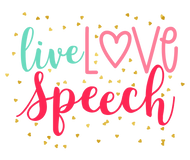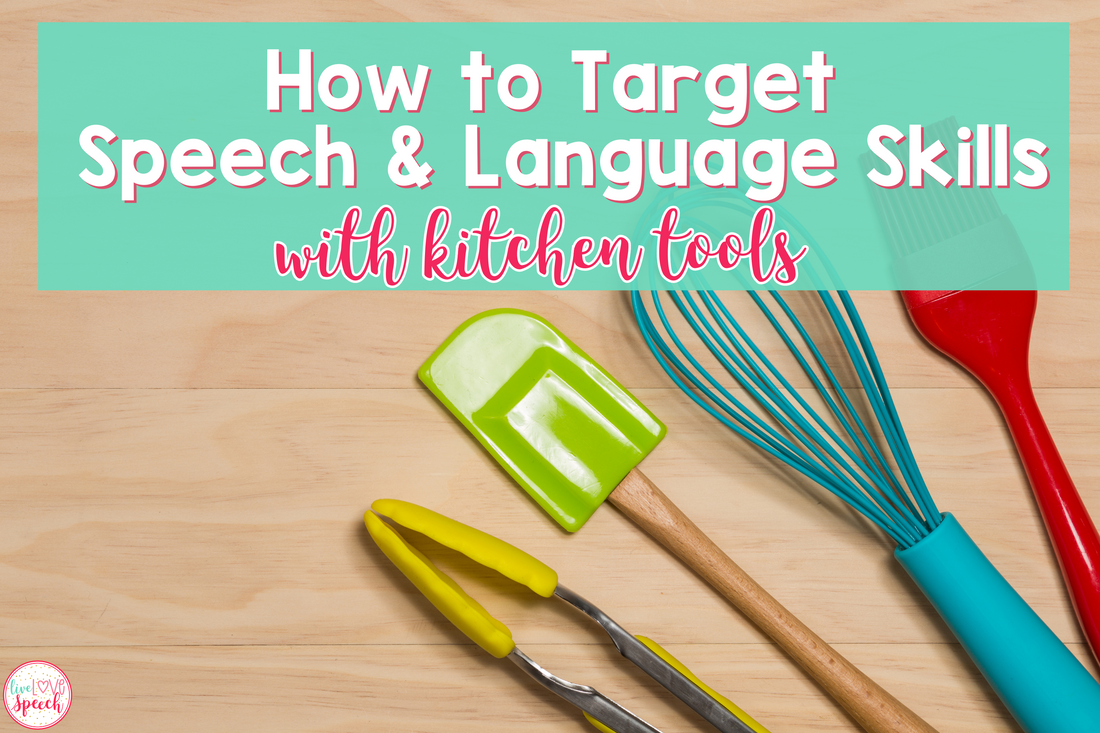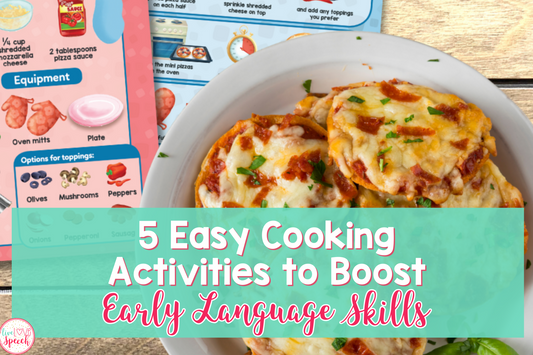
When I started using kitchen tools with Landon, I was just looking for some bonding time, but it turned out to be a great way to boost his speech and language skills too. We began with simple things like a whisk, measuring cups, and spatulas.
As we mixed, poured, and stirred, I noticed how naturally these activities encouraged conversation. Describing the textures, counting the measurements, and talking through each step not only gave us something to chat about but also helped Landon with his vocabulary and following directions.
How Kitchen Tools Enhance Speech and Language Skills
By physically engaging with the task, kids can practice their speech in a more meaningful context—whether it’s asking questions, giving directions, or naming objects. Plus, these activities offer opportunities for following multi-step instructions and problem-solving, which are both essential for language development.
Once I started using kitchen tools with Landon, I realized—not only could I use this approach with him, but it was also perfect for my speech students. I could see how other SLPs could easily integrate everyday tools like these into therapy sessions, providing an engaging way for kids to practice their skills.
That’s why today, I want to share with you how you can also use kitchen tools to target speech and language skills in your sessions or at home.
These simple, everyday items offer so much potential for creative, hands-on learning!
Using Kitchen Tools to Target Speech and Language Skills

1. Measuring Cups
Activity Ideas:
- Measuring Cups: Use measuring cups to practice key vocabulary like full, empty, more, less, and even introduce basic fractions.
- Encourage your child or students to measure different ingredients and describe what they’re doing, comparing amounts as they go.
- Have them predict what might happen if they use too much or too little of an ingredient, sparking conversation.
Language Focus:
- Describing measurements: Talk through the process, using comparative language like bigger, smaller, heavier, and lighter.
- Discussing quantities: Practice asking and answering questions about how much is needed, how much has been used, and how much is left.
- Building comprehension: Following multi-step directions involving measuring tasks (e.g., “First, fill the cup halfway, then pour it into the bowl.”).
2. Mixing Bowls
Activity Ideas:
- Engage in turn-taking while mixing ingredients, encouraging phrases like your turn and my turn to develop conversational skills.
- Ask your child or students to narrate what they are doing as they mix, using descriptive language to explain each step.
- Introduce teamwork by having multiple children mix different ingredients and then combine them.
Language Focus:
- Promoting collaborative language: Focus on phrases like let’s mix it together, I’ll hold the bowl, you stir, or we did it! to build cooperation.
- Encouraging conversational skills: Use this as a chance to model question and answer exchanges like What are you mixing? or Whose turn is it now?.
3. Whisks
 Activity Ideas:
Activity Ideas:

- Use whisks to describe actions (e.g., "whisking," "stirring") and create a story about what they’re doing.
- Encourage students to talk about what they’re making and the steps they are taking to prepare it.
- Incorporate my Visual Recipe Cards, like the Brownie in a Mug activity, where students whisk ingredients. This visual aid helps guide them through the process, while also supporting language development. Check them out here!
Language Focus:
- Action verbs such as whisking, stirring, and mixing.
- Sequencing steps and explaining processes while following the visual recipe.
- Promoting narrative skills as students create stories around the actions they're performing.
4. Baking Sheets
Activity Ideas:
- Use baking sheets to sort objects or categorize items, such as organizing by colors, shapes, or sizes.
- Introduce pretend baking activities by placing different items (e.g., pretend food or cut-out shapes) on the sheet and talking about what’s being baked.
Language Focus:
- Expanding vocabulary: Focus on words like sorting, organizing, grouping, and the names of the objects being sorted (e.g., "These are round cookies, those are square").
- Categorization skills: Ask students to describe why certain objects belong together or how they differ.
5. Cookie Cutters

Activity Ideas:
- Use cookie cutters to create different shapes and have discussions about their properties (e.g., round, square, star).
- Engage in pretend play by cutting out shapes and asking kids to describe what they are making.
Language Focus:
- Descriptive language: Encourage students to use words like edges, corners, smooth, rough, small, and large to describe the shapes they create.
- Categorization: Group the shapes into categories and ask them to explain how the shapes are similar or different.
6. Spoons
Activity Ideas:
- Use different sizes of spoons to compare and contrast (e.g., "big spoon" vs. "little spoon") or talk about how much each holds.
- Have children guess how many small spoonfuls it takes to fill a large spoon, prompting them to use measurement-related language.
- Incorporate Visual Recipe Cards that include spoons in the directions (e.g., measuring ingredients with a teaspoon or tablespoon). This visual guide encourages children to talk about the specific steps and tools needed for each recipe.
Language Focus:
- Comparatives and superlatives (big, bigger, small, smaller).
- Measurement-related vocabulary (teaspoon, tablespoon, spoonful).
- Describing the process of measuring and following directions from the recipe.
7. Spatulas
Activity Ideas:
- Use spatulas in pretend play or role-playing scenarios, encouraging dialogue between children about what they’re cooking or baking.
- Incorporate role-play into story time by pretending they’re flipping pancakes, stirring soups, or spreading frosting on cakes.
Language Focus:
- Role-playing and expressive language: Have children use expressive phrases like I’m flipping it!, I’m serving the cake, or It’s ready!.
- My Play-Based Visual Recipe Pizza Theme (with fake food) is perfect for this kind of role-play, offering visual cues and interactive activities to support speech development.
8. Measuring Spoons
Activity Ideas:
- Use measuring spoons to discuss the importance of precision and accuracy, emphasizing how much of each ingredient is needed.
- Practice sequencing steps with students by having them follow a visual recipe, asking them to explain each step as they go.
Language Focus:
- Sequencing language: Use phrases like first, next, after that, and finally to help children organize their thoughts.
- Measurement vocabulary: Reinforce terms like teaspoon, tablespoon, half, quarter, and pinch during the activity.

9. Tongs
Activity Ideas:
- Practice fine motor skills by using tongs to pick up various objects like pom-poms, small toys, or pieces of pretend food.
- Encourage children to talk about the objects they are picking up, describing them in detail (e.g., soft, round, bumpy).
Language Focus:
- Vocabulary development: Focus on describing the objects in terms of size, texture, and color.
- Descriptive language: Use words like grip, pinch, hold, and release to describe how tongs are used to manipulate objects.
10. Aprons
Activity Ideas:
- Engage in role-play where kids pretend they are chefs, describing what they would wear while cooking or baking.
- Use aprons to talk about clothing items and safety in the kitchen, reinforcing the importance of wearing the right gear.
Language Focus:
- Vocabulary related to clothing: Focus on words like apron, chef’s hat, gloves, and uniform.
- Descriptive language: Encourage children to describe what they’re wearing and why it’s important to wear it while cooking.
Take Your Learning to the Next Level
Remember!! Everyday kitchen tools offer so many opportunities to build speech and language skills, and incorporating my Visual Recipe Cards makes it even more effective.
These cards provide visual guidance, helping kids work on important skills like sequencing, describing actions, and comparing items—all while having fun in the process.
If you’d like to learn more about how to use these cards in your sessions, be sure to check out my blog post on Visual Recipe Cards, where I share additional ideas and tips.
As a thank you for reading, I’m also offering a sneak peek of my Visual Recipe Cards! Download this freebie to see how they can make learning both engaging and productive for your students.
Save This Post
Don't forget to save this post on your favorite Pinterest board so you can come back and check out visual recipes when you're ready to start cooking!







